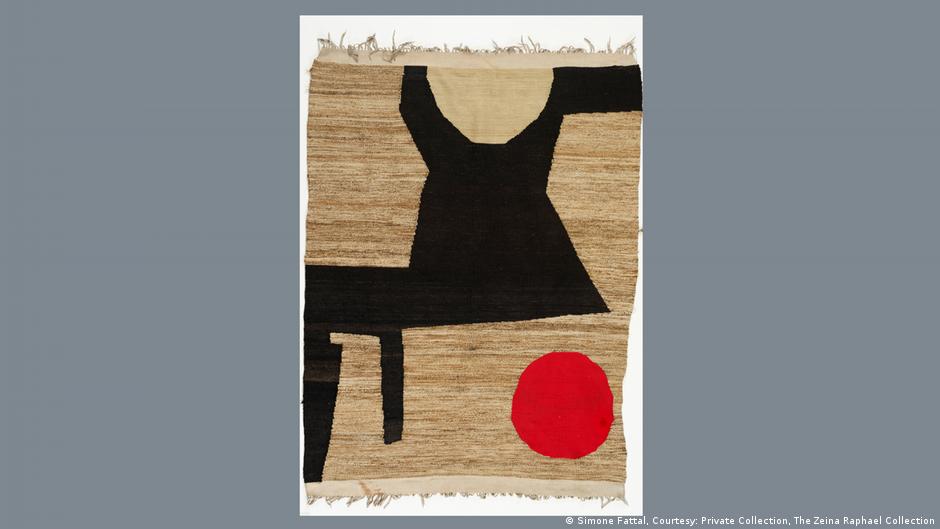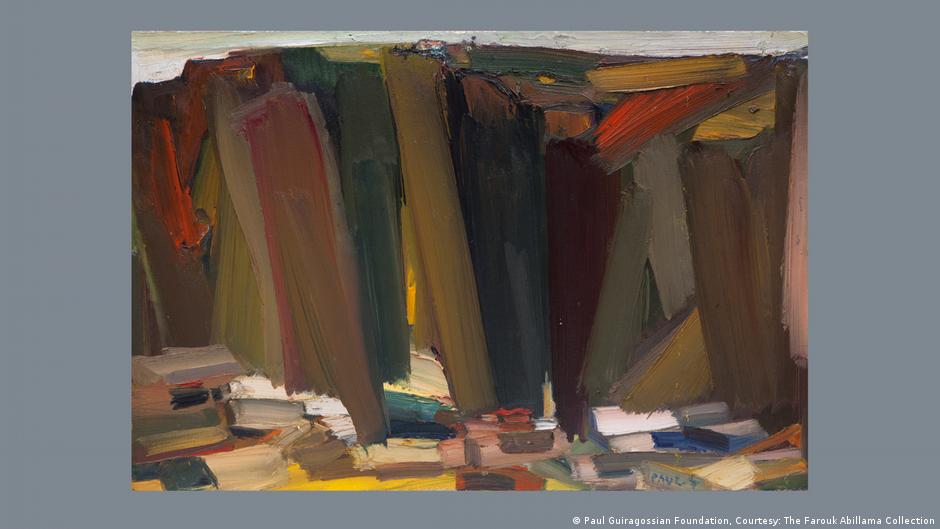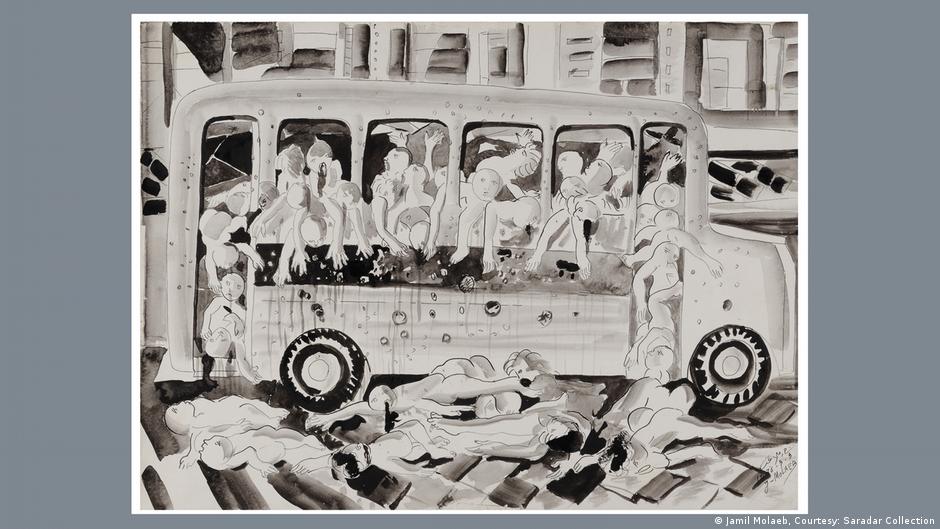Beirut's golden 1960s revolutionary art
-

Khalil Zgaib, 'Untitled,' 1958: for centuries, Beirut's cosmopolitan identity has been linked to trade and commerce. Its port continued to be a source of inspiration for artists in the 1960s, including those who looked beyond the exclusionary glitz and glamour of high society towards the working life of ordinary people (Khalil Zgaib, Courtesy: Saleh Barkat Collection/Agial Art Gallery) -

Etel Adnan, 'Untitled,' approx. 1972-73: artists in Beirut were keen to meld avant-garde methods to local traditions. After beginning her career as a writer in French, Etel Adnan threw herself into painting and tapestry making in the 1960s, merging abstract concepts with traces of Arabic calligraphy. "I didn't need to belong to a language-oriented culture but to an open form of expression … My spirit was loose," she wrote (image: Simone Fattal, Courtesy: Private Collection, The Zeina Raphael Collection) -

Paul Guiragossian, 'Bteghrine', 1965: artists in Beirut revelled in abstraction, drawing on the rich influences of modernism, surrealism and abstract expressionism. With just a few broad, heavy brushstrokes, Paul Guiragossian brought to life the dramatic hillside overlooking the village of Bteghrine, nestled in the mountains outside the Lebanese capital (image: Paul Guiragossian Foundation, Courtesy: The Faroukh Abillama Collection) -

Huguette Caland, 'Eux', approx. 1975: the sexual revolution left its mark on Beirut's arts scene, as queer and feminist perspectives found new modes of creative expression. Huguette Caland's work deconstructs and rearranges body parts into curiously abstract formations that still retain their eroticism (image: Courtesy: The Huguette Caland Estate) -

Juliana Seraphim, 'Untitled', 1979: Beirut became a meeting point for artists from around the Middle East, where it was a relative safe haven in a time of conflicts, coups and revolutions. Juliana Seraphim was one of the first generation of exiled Palestinian artists, displaced to Lebanon as a refugee in 1952. Her fantastical, dreamlike paintings often drew on childhood memories of a homeland to which she could not return (image: Courtesy: Saleh Barakat Gallery/Agial Art Gallery) -

Jamil Molaeb, 'April 13', from the series 'Civil War Diary 1975-1976': Jamil Molaeb was unsparing in his depiction of the sectarian carnage unleashed by the outbreak of the Lebanese Civil War. This ink and water painting depicts the infamous bus massacre of 1975, carried out by a Phalangist militia, which is commonly taken as the spark that ignited the conflict (image: Jamil Molaeb, Courtesy: Saradar Collection) -

Nicolas Moufarrege, 'The Blood of the Phoenix', 1975: though some politically active artists remained in Beirut during the civil war, many were scattered to Europe, the U.S. or the Persian Gulf as galleries and art institutions closed their doors. Nicolas Moufarrege left in 1975 for Paris, later moving to New York, where he would spend the rest of his life (image: Courtesy Nabil and Hanan Moufarrej (N&M Holdings LLC), Shreveport, Louisiana)
https://qantara.de./en/node/42767
Link
To all image galleries
